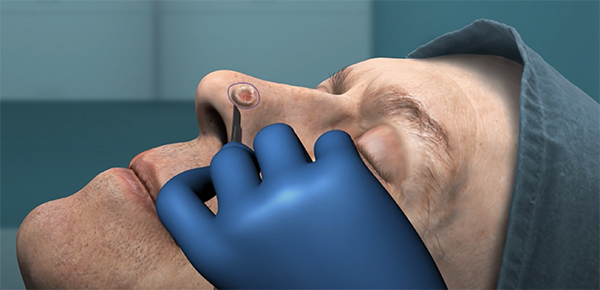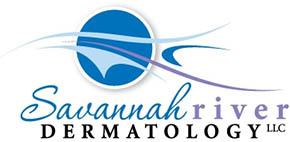Mohs micrographic surgery is the most effective and advanced treatment for skin cancer. It is performed on an outpatient basis using a highly specialized and precise technique that removes the cancer in stages, one tissue layer at a time. This technique allows physicians to precisely identify and remove a tumor while leaving the surrounding healthy tissue intact and unharmed. Mohs surgery offers the highest potential for cure – even if the skin cancer has been previously treated by another method.
What is Mohs Surgery?
Mohs surgery is a specialized type of skin cancer surgery, generally for basal cell and squamous cell carcinoma. Dr. Paine has completed dermatology residency (4 years) plus an additional 1 year of training specifically for Mohs surgery. This surgery is performed in stages. First, Dr. Paine will inject local numbing medication in a manner similar to how your provider did at the time of the biopsy. Next, she will take the scar or remaining skin cancer that she sees and cut this out as well as a small amount of normal skin called a “margin.” She will then take the tissue to the lab where it is processed into microscope slides for her to read. When she reads the slides, she can map out any remaining skin cancer that she sees and go back to take additional skin only in this area, thus leaving all the normal skin intact and taking just what is necessary to clear the skin cancer. When the skin cancer is clear, Dr. Paine will plan how to best heal the wound. This is usually with stitches, but the exact way she will plan to heal the wound is only determined once the skin cancer is completely removed.

All About My Upcoming Mohs Surgery
How long will it take?
Mohs surgery often takes a while. Please do not schedule any additional appointments that day as we cannot guarantee you will be out of surgery in time to attend them. Please anticipate your appointment taking at least 3 hours that day. Each “layer” or piece of skin that Dr. Paine cuts takes about 45 min – 1 hour to be made into slides and then analyzed by her under the microscope. During this waiting time, you will wait in your procedure room or our private waiting room with a bandage over the area. Most skin cancers take between 1 and 3 rounds of surgery to clear, so it can easily turn into a long appointment with us. After the cancer is cleared, placing stitches usually takes between 30 min to 1 hour, depending on the size and complexity of the wound.
Who and what should I bring?
We have televisions, and light snacks to make your wait time more comfortable. Please feel free to bring reading material, knitting, etc. to work on while you wait. During the time of the pandemic, we are unable to allow family members to wait with you during the surgery. They may drop you off at the door but will not be allowed to enter the building except for circumstances such as advanced dementia, the parent of a minor patient, or other specific circumstances that should be discussed with our office prior to your surgery.
Should I fast or hold any of my medications before surgery?
No. Please eat a normal, light breakfast before your appointment and take all of your medications as usual. If you take blood thinners (aspirin, Coumadin/warfarin, Eliquis, Plavix, etc.), you do NOT need to stop them. Please continue them as prescribed.
Am I able to drive myself to the appointment?
In general, Dr. Paine does not give you any medication that will make you drowsy or unable to drive. Local injectable numbing medication is used to prevent pain during the surgery. However, because it is potentially a very long and tiring day for you, and because a large bandage on the nose or cheek may sometimes interfere with your glasses or line of sight, we recommend that you prepare to have someone drive you if necessary.
Will Dr. Paine or another doctor be placing my sutures?
In general, Dr. Paine completes the closure portion of your Mohs surgery, unless she has met with you prior to your surgery to discuss an outside physician participating in your closure.
In the unlikely event that your closure unexpectedly requires the intervention of another physician’s expertise, Dr. Paine will arrange this for you herself. Reasons for this include unanticipatedly large defects, or if you are unable to tolerate the closure without general anesthesia.
How long is the healing time?
Anticipate a recovery time of at least 1-2 weeks. While there are some exceptions, in general, you will have sutures which need to be removed in this time frame. Please do not plan any travel or strenuous activities during this time. You will need to keep the wound clean and anything that promotes sweating or elevations in your blood pressure is not recommended. If blood pressure rises high above its normal level, particularly in the first 72 hours, this can result in post-procedure bleeding. Thus, heavy exercise is also not recommended during your first week after surgery.
Depending on your job, you may need to ask for time off during your recovery, particularly if you do manual labor, or have a job that requires public image. You should anticipate bruising and swelling during the initial healing period. If you need time off, Dr. Paine will be happy to provide a work excuse as needed.
Specific WRITTEN wound care instructions will be provided to you on the day of your appointment, as well as enough bandage supplies to last until suture removal.

